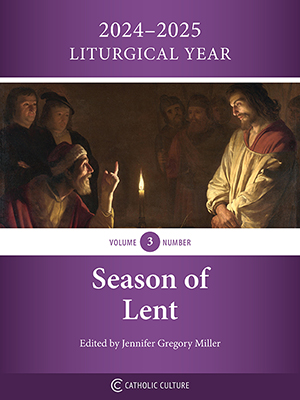The Vatican’s one-way ticket to liturgical reform
By Phil Lawler ( bio - articles - email ) | Dec 21, 2021
Yesterday I argued that the Vatican’s declared reason for new restrictions on the traditional Latin Mass (TLM) is unconvincing. As I explained, while the Vatican charges that traditionalists do not recognize the validity of the post-conciliar liturgy, in fact the people who attend the Novus Ordo are more likely to think it is invalid.
Why is there such widespread unbelief among the Catholics in ordinary parishes? Why has there been a catastrophic decline both in Mass attendance and in Eucharistic piety since Vatican II? Many books have been written on those questions; I do not propose to resolve the debate here. Suffice it to say that if the Novus Ordo is not the cause of the decline, it is definitely not the cure.
Nevertheless, Pope Francis reminds us in Traditionis Custodes, and the Congregation for Divine Worship (CDW) repeats in this week’s bombshell, the Novus Ordo is what the Vatican Council wanted for the universal Church. Is that really true? A great deal of ink has been spilled over that subject, too. Curious readers might form their own judgments, by reading Sacrosanctum Concilium, the Vatican’s document on the liturgy, and measuring the liturgy in their own parishes against the standards set by the Council fathers.
Very few Catholics today are content with the liturgy that they experience each Sunday; nearly everyone would like to make some changes. And indeed the changes have continued; parishioners have learned to expect that each new pastor, each new priest, will bring a somewhat different approach to the Mass. At best, the renewal envisioned by the Council is incomplete.
But if there is a general consensus that liturgical renewal should continue, there is a lively debate about which path that renewal should take. Should we continue along the path that we have traveled for the past 50 years? Or should we seek to restore the reverence and stability that we enjoyed before the Council?
Pope Francis, in Traditionis Custodes, said that the liturgical reform is “irreversible.” But that begs the question. If we cannot reverse directions, we need to know in which direction we are—or should be—headed. And insofar as Pope Francis has reversed the direction set by Pope Benedict XVI, the next Pontiff could reverse the policies of Pope Francis. The future of liturgical reform is not settled.
Traditionis Custodes is based on the assumption—now amplified in the CDW document—that reform excludes any steps back toward the TLM. The use of the traditional liturgy is to be allowed only as a concession, with the clear understanding that it will never be allowed back into the mainstream.
Pope Benedict, in a 2007 letter to the world’s bishops, rejected the idea that the TLM had been abolished. “What earlier generations held as sacred, remains sacred and great for us too,” he explained, “and it cannot be all of a sudden entirely forbidden or even considered harmful.” Notice here that Pope Benedict does not simply pronounce a judgment about the traditional liturgy; he explains why it cannot be abrogated. Notice, too, that Pope Francis has done what his predecessor said could not be done: not quite “entirely” forbidding the TLM, but definitely suggesting that the old liturgy should be “considered harmful.”
“There is no contradiction between the two editions of the Roman Missal,” Pope Benedict wrote. And remarkably enough Archbishop Arthur Roche, who signed the CDW’s document restricting the TLM, once said the same thing: “The Extraordinary Form is another expression, which is older than the ’69 Missal, and is a valid expression of the Church’s liturgy.”
Yet now the instructions from the CDW, released over Archbishop Roche’s signature, give every indication that the TLM is not to be regarded as a valid expression of the Church’s liturgy—that it does pose a contradiction to the Novus Ordo. The CDW document is packed with evidence of hostility to the traditional liturgy and the Catholics who prefer it. To cite just one example, the CDW decrees that a priest who celebrates the NO cannot celebrate the TLM on the same day. Pope Benedict, in the letter to bishops quoted above (in fact in the same paragraph) had suggested that priests should use both forms, and especially that traditionalist priests should celebrate the Novus Ordo “to experience full communion.” Yet now the CDW bans that option—while complaining that traditionalist priests may not be in full communion with the broader Church.
Pope Benedict hoped that the widespread use of both forms of the Roman rite—the TLM and the Novus Ordo—could lead to a “mutual enrichment.” To be honest, that hope has gone unfulfilled. Traditionalist Catholics, scarred by years of experience on the roller-coaster of liturgical change, have been reluctant to consider adapting any element of the revised liturgy. Catholics in Novus Ordo parishes have remained generally unfamiliar with the TLM, and so have no reason to incorporate elements of tradition. The net result of Summorum Pontificum, at least to date, had not been a “mutual enrichment” but a one-way movement, with many thousands of Catholics discovering the beauty of the ancient liturgy and moving into TLM communities.
Yet even that movement might eventually have produced the result for which Pope Benedict had hoped. At some point in the future, when the passionate intensity of the liturgical debate had faded, along with the memories of past mistreatment, and when more Catholics had experienced the TLM, there might have arisen a willingness to reconsider the path of liturgical reform.
My friend, the late Father Paul Mankowski, spoke of the traditional liturgy as the “seed corn,” suggesting that when the fever for constant liturgical innovation has passed, the Church will look again to the TLM as the base on which a true reform could be constructed. Pope Benedict made such a development more likely with Summorum Pontificum; with Traditionis Custodes, Pope Francis has slammed the door.
And this, remember, has been done in the name of promoting Church unity! In an excellent new collection of essays responding to Traditionis Custodes (to which, in full disclosure, I should mention that I contributed), the title tells the story: From Benedict’s Peace to Francis’s War.
Tomorrow, in a third and final essay in this series, I will speculate on what might have happened in the past, and what could happen in the future, if Catholics could freely choose between what Pope Benedict termed the “ordinary” and “extraordinary” forms of the Roman liturgy.
All comments are moderated. To lighten our editing burden, only current donors are allowed to Sound Off. If you are a current donor, log in to see the comment form; otherwise please support our work, and Sound Off!








